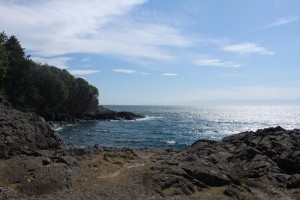Starting at the Bottom
It is amazing how quickly a strange place full of unfamiliar faces can begin to feel like home. This experience only continues to get better.
In class this past week we looked at ecosystems from the “bottom upâ€. In a brief description, this means that you study ecology from the bottom of the food chain up to the top, examining the ecological differences in tropic levels. Combining this newer topic while still emphasizing sustainability science, we discussed case studies that look at sustainable fisheries.
My case study was “An ecosystem based approach for Alaska groundfish fisheriesâ€. I found this particular paper to be especially interesting because it focuses on managing fisheries from the perspective of the ecosystem instead of focusing on the economic benefits. The Alaskan groundfish fisheries management is known for being progressive and fairly sustainable. The total annual catch has been at 2 million tones for the last 20 years, an impressive statistic. The National Pacific Fishery Management Council wanted to include all aspects into the management process including: public participation, scientific research, comprehensive monitoring, gear restrictions, habitat conservation areas, and more. Conservative catch limits are highly emphasized and the total annual catch is always less than what the environment can sustain. This is a cautionary approach to fisheries management. The two aspects of the management plan that was most impressed with were the Marine Protected Areas and the examination of Marine Mammals and Seabirds. The Marine Protected Areas allocate specific locations that are important to the ecosystem and ban fishing from these areas, or lower the catch limits. This approach also takes into consideration the fisheries impacts on marine mammals and seabirds. Lowering by-catch rates, and decreasing negative interactions between the animals and the fishing boats are two of the goals for this aspect of system. I found this “ecosystem†approach to fisheries to be interesting and insightful. One important thing that I took away from our discussion of this paper is that although the management reports appear to be purely positive, every system has its downfalls.
Fisheries are incredibly important to understand right now in the world of killer whale
conservation. We know that a lack of prey, specifically Chinook salmon, can have a huge impact on the population dynamics of the Southern Resident killer whales. Discussing a variety of fisheries management systems helped me have a better understanding of the current debates about salmon abundance and health here in the Pacific Northwest.
Yesterday we were lucky enough to have beautiful weather again. We spent our day off adventuring to Lime Kiln lighthouse and found a wonderful view atop the kiln itself. I never know what to expect here, this place has a way of surprising you all the time, but I am loving every minute of this adventure.




 Twitter
Twitter LinkedIn
LinkedIn Facebook
Facebook